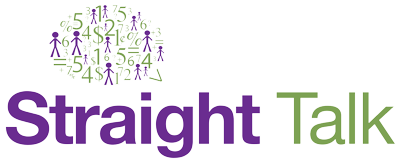Remote client relationship. How do you keep the relationship on track, engaged and loved up?
When you never see a client in real life; when communicating in an online or remote environment, it can be a tricky proposition.
I recently answered this exact question in an online business forum. Besides thinking about what it is that we at Straight Talk do. It prompted me to think why we do what we do, and how can we do this better?
Years ago we would have taken files home on a USB, had them emailed to us or logged into a VPN (virtual private network). Advances in technology means we can now simply open our laptops and work anywhere in the world with immediate access to all the information we require.
A quick Google search will reveal the hundreds, if not thousands of tools available to us. As with any tools it is how we use them, the strategy applied and the actions around that strategy that really make the difference.
Despite what business you are in it is the relationship you have with your customers (both internal and external) that ultimately drives business and matters most.
Relationships is our strategy and with all relationships Communication is key.
With this as our focus point, all the tools we use revolve around how we can best communicate with our clients and each other.
Written communication is just words on a screen, despite this they can be interpreted in a myriad of ways depending on the state of the reader. Is the reader having a good or a bad day, are they rushed when reading it? The human condition plays a major role.
Never underestimate the power of a phone call, in saving time and avoiding misunderstanding.
I like to think of communication in order of priority, firstly face to face in person, then skype, followed by the phone. Text and email come next followed up by project management software.
Working Remote can be as simple as working from home in the same city as your office. or others, it raises the issues of organising meetings across different time zones.
Online time clocks are great to navigate meeting times across various time zones. Meeting planners and calendars that generate links to send to others so they can schedule meetings according to their convenience are also valuable. Time & Date is my favourite online meeting planner for managing remote client relationships successfully.
If you travel regularly to multiple locations like I do, when booking your own appointments always use the time zone function in your chosen online calendar.
There are many good schedulers on the market so do your research. What I love about an online meeting scheduler is that it takes care of emails and phone calls back and forward in setting the meeting and then sends everyone attending it prompt emails or texts as reminders of their attendance. Missed meetings and communication in a long distance relationship is the kiss of death.
If having a successful remote client Relationship is a part of your strategy then flexibility needs to be a priority.
Flexibility of workstyle allows you to work across the whole of a 24 hour period. Not so great if you like the structure of a 9-5 day. Perfect if you thrive on variety and the ability to schedule work around your natural peak productivity times.
Take into consideration how those you are communicating with like to work too. Relationships are a two way street. Disappointment arises when unmet expectations occur. Clarity with your team and clients on when, who, what and how is essential. When everyone is on the ‘same page’ and expectations are clear the gap for miscommunication is shortened.
Using project management software that allows you to share with your team and clients. Allocating tasks, setting deadlines and discussion around projects go a long way in knowing who is doing what when. This transparent communication improves the remote client relationship. We use basecamp.
In summary, no matter what tools you are using to engage your team and clients when working away from the office, the rules of relationships will always apply. Communication, Flexibility and Clear Expectations are key.






One Comment